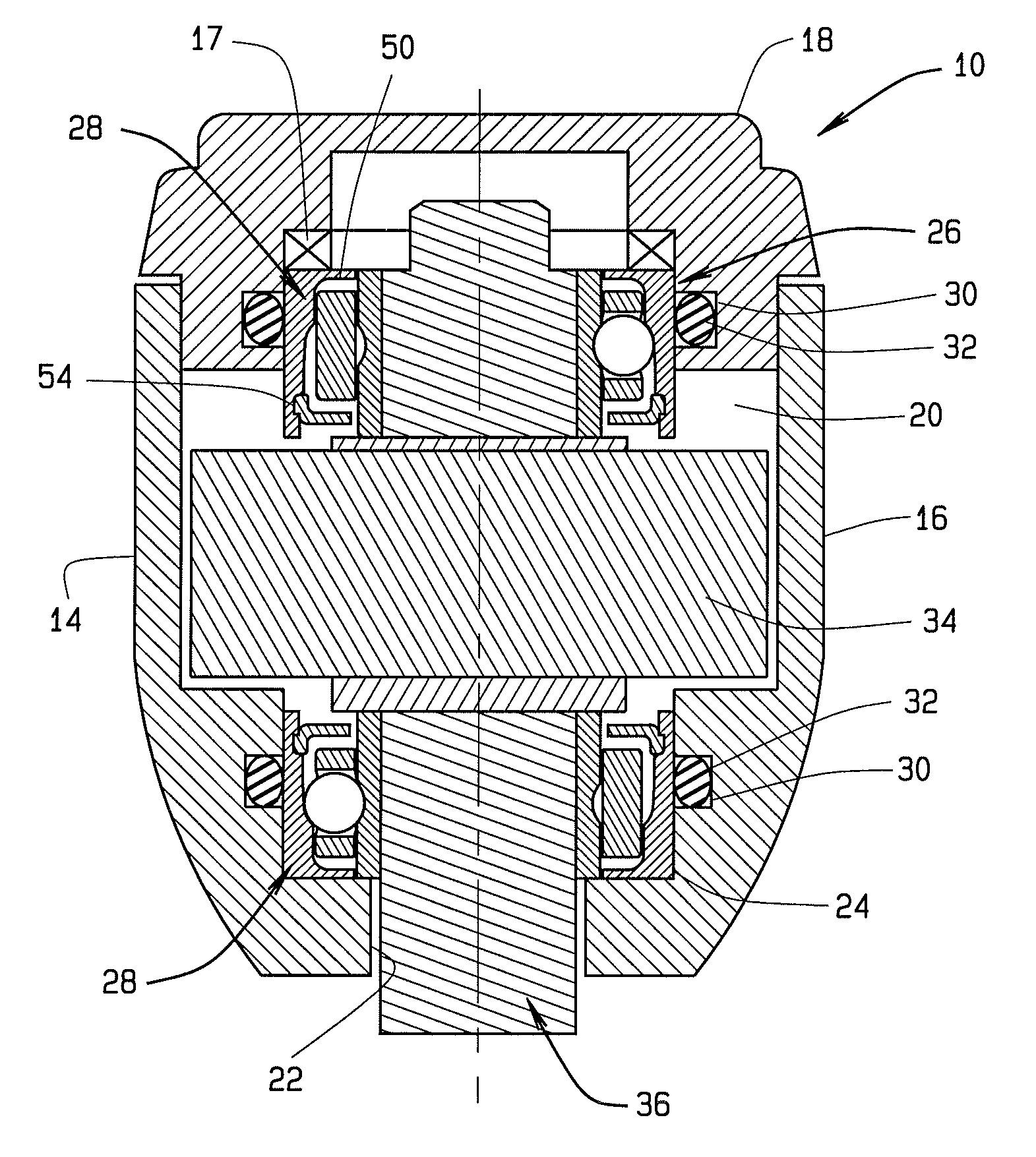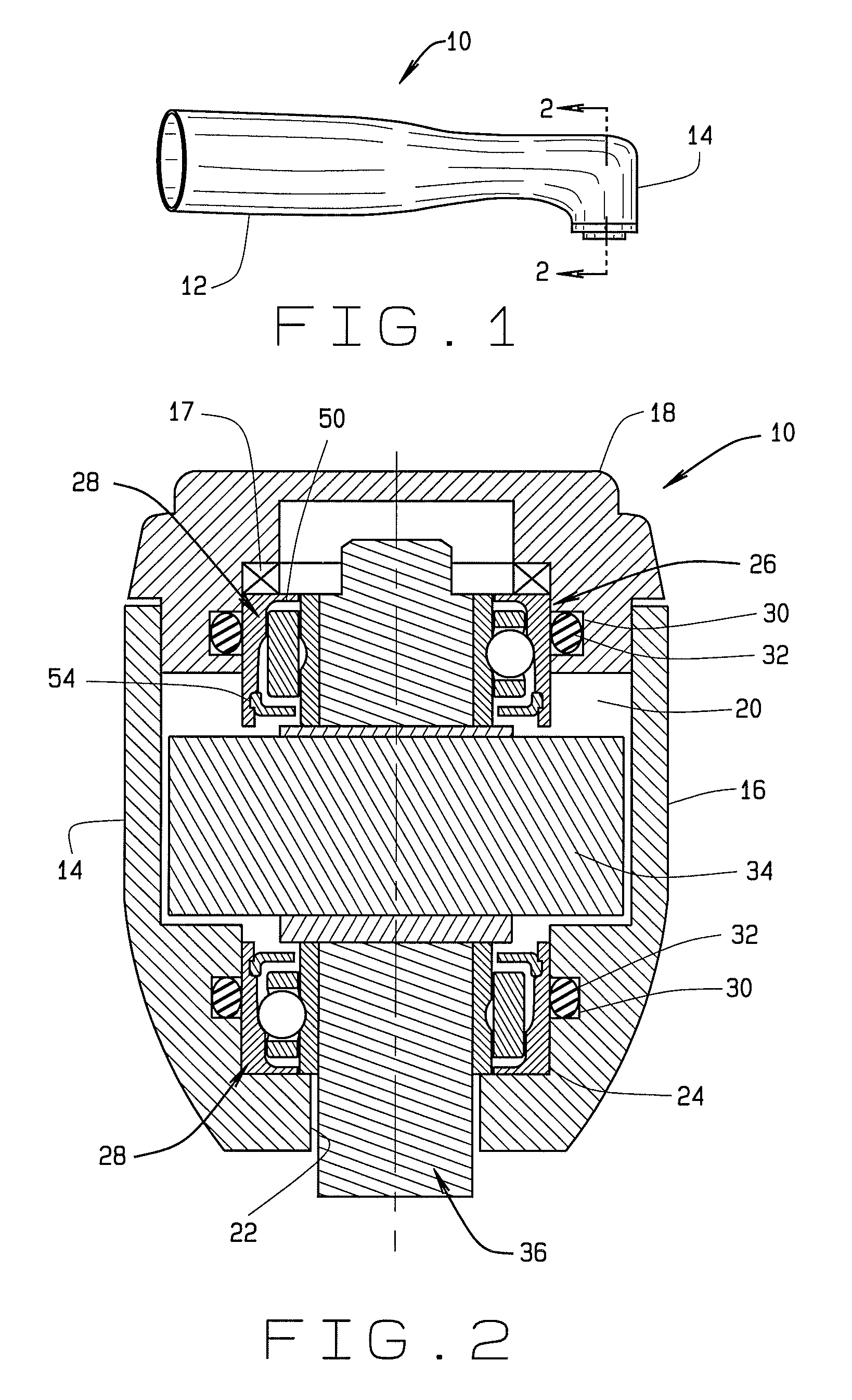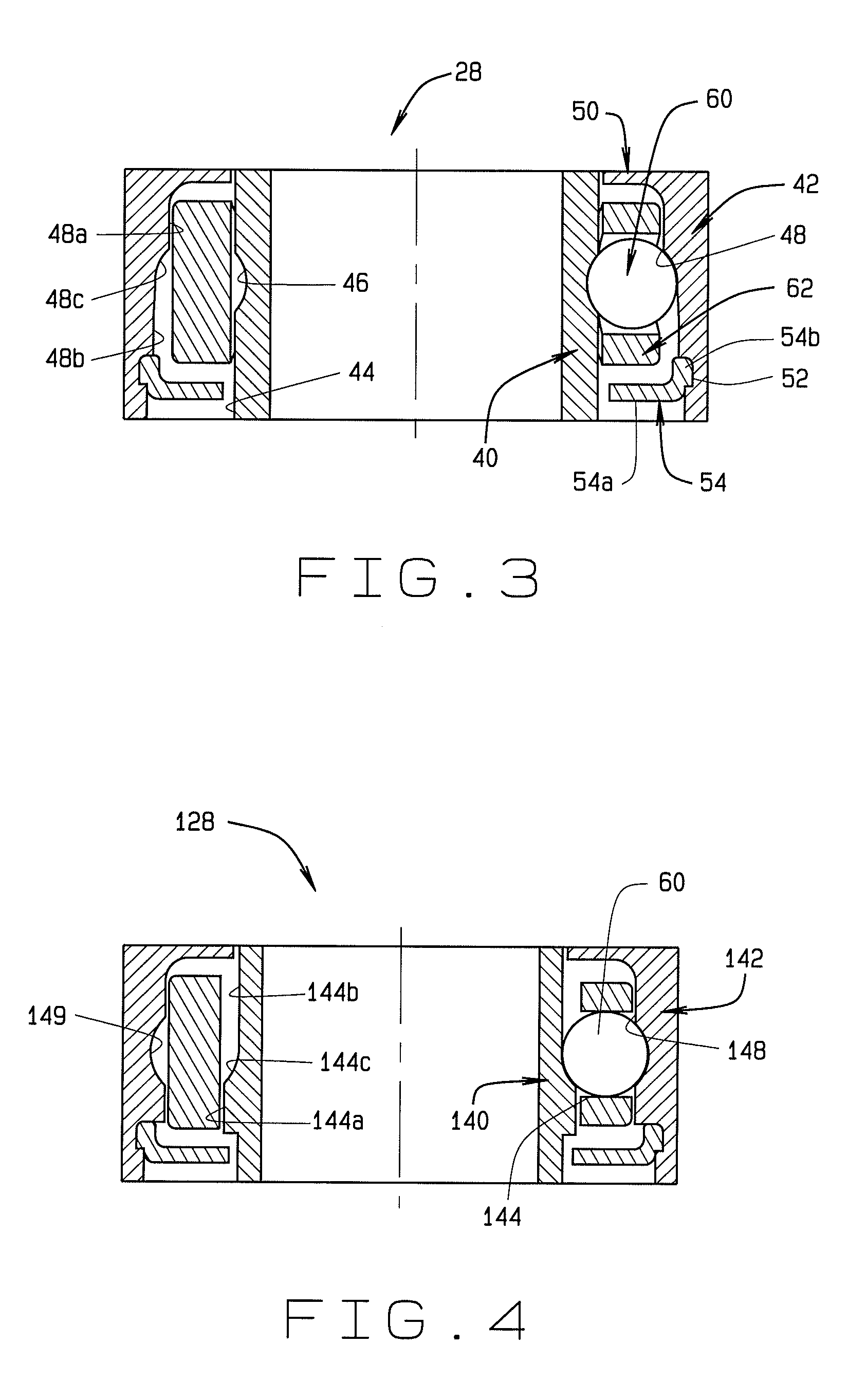High speed ball bearing for dental or medical handpieces
a high-speed ball bearing and handpiece technology, applied in the field of high-speed ball bearings, can solve the problems of contaminating the bearings in such handpieces with solid and liquid biological matter, affecting the life of the bearings, and common challenges to long bearing life, so as to facilitate the retention of lubricants, prevent contamination ingress, and facilitate cleaning.
- Summary
- Abstract
- Description
- Claims
- Application Information
AI Technical Summary
Benefits of technology
Problems solved by technology
Method used
Image
Examples
Embodiment Construction
[0024]The following detailed description illustrates the invention by way of example and not by way of limitation. The description enables one skilled in the art to make and use the present disclosure, and describes several embodiments, adaptations, variations, alternatives, and uses of the present disclosure, including what is presently believed to be the best mode of carrying out the present disclosure.
[0025]Turning to the Figures, and to FIG. 1 in particular, powered hand-held instruments 10 (handpieces) for supporting rotary driven tools, that are used frequently in medical, surgical, or dental typically have a sleeve 12 and an end portion (or head) 14. As shown in FIG. 2, the head 14 comprises a body 16 and a cap 18 which, in combination, define an interior cavity 20. A bore 22 extends downwardly from the interior cavity 20 to the bottom of the head 14. The body 16 and cap 18 include aligned recesses 24 and 26, respectively, which each receive a bearing assembly 28. Circumferen...
PUM
| Property | Measurement | Unit |
|---|---|---|
| Fraction | aaaaa | aaaaa |
| Fraction | aaaaa | aaaaa |
| Fraction | aaaaa | aaaaa |
Abstract
Description
Claims
Application Information
 Login to View More
Login to View More - R&D
- Intellectual Property
- Life Sciences
- Materials
- Tech Scout
- Unparalleled Data Quality
- Higher Quality Content
- 60% Fewer Hallucinations
Browse by: Latest US Patents, China's latest patents, Technical Efficacy Thesaurus, Application Domain, Technology Topic, Popular Technical Reports.
© 2025 PatSnap. All rights reserved.Legal|Privacy policy|Modern Slavery Act Transparency Statement|Sitemap|About US| Contact US: help@patsnap.com



